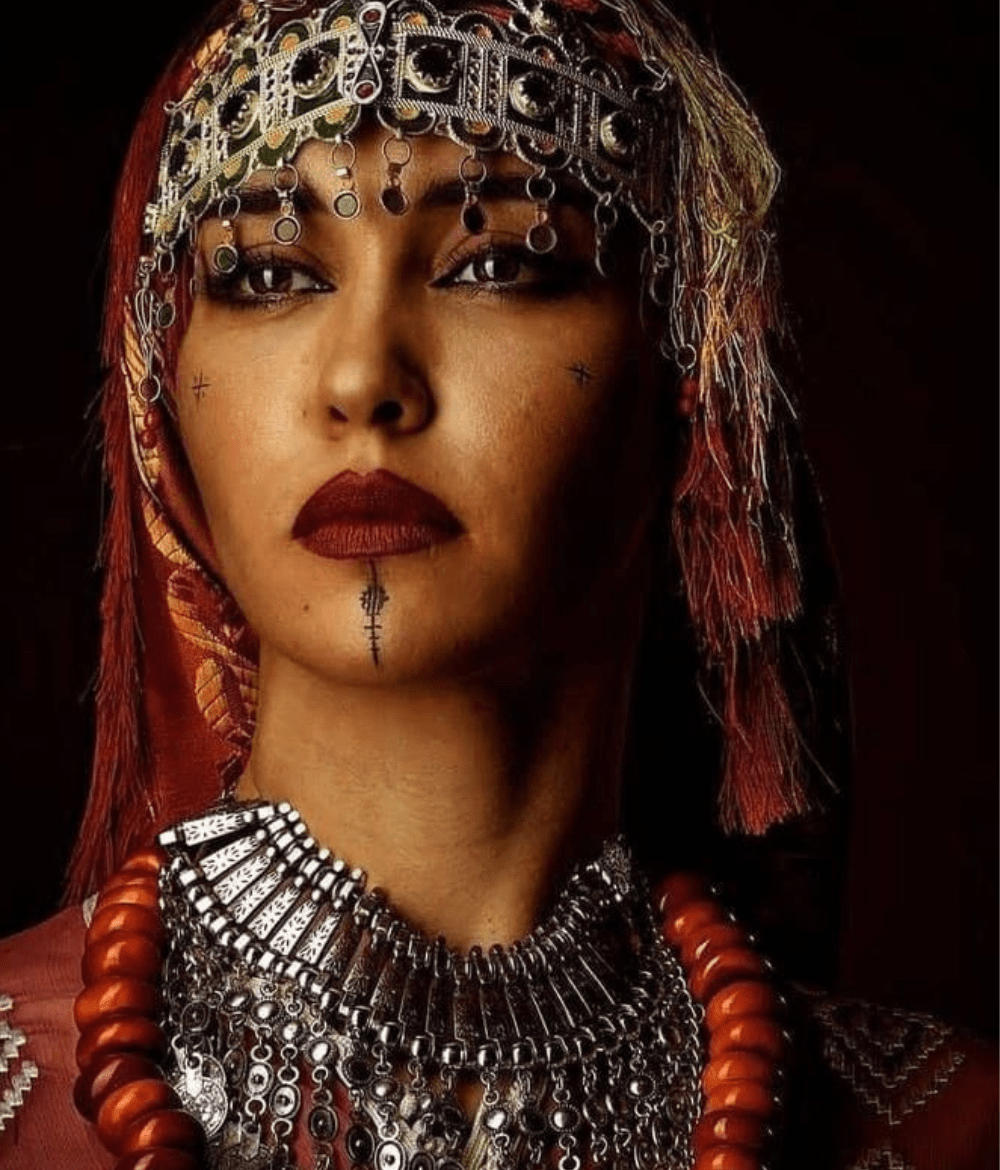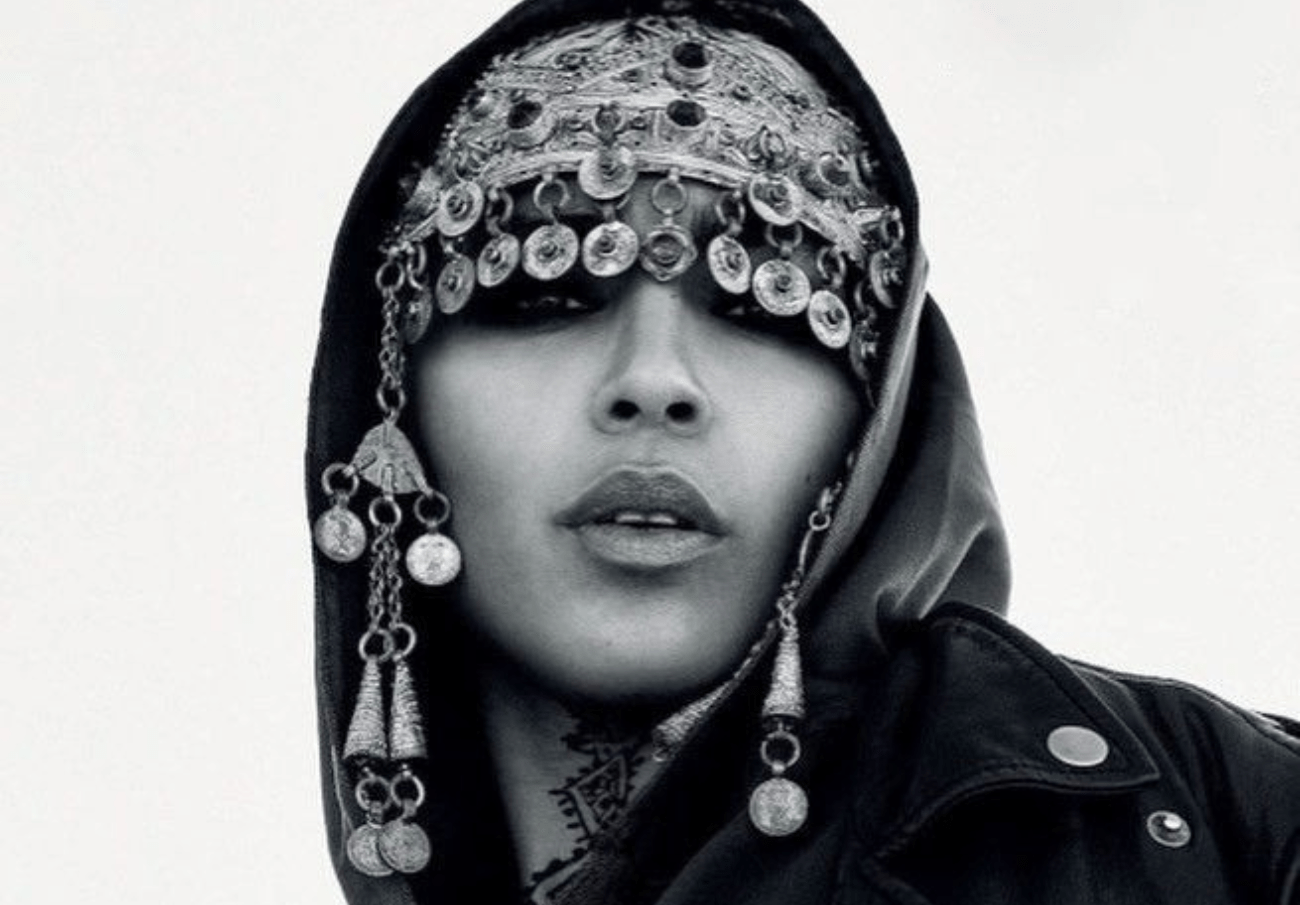No products in the cart.
Modern Takes on Berber Fashion
ⵎⵓⴷⴰⵔⵏ ⵜⴰⴿⵉⴽⵙ ⵓⵏ ⴱⵓⵔⵒⵉⵔ ⴼⴰⵙⵚⵉⵓⵏ
Moroccan fashion is experiencing a dynamic evolution, with designers seamlessly blending traditional Berber (Amazigh) elements into contemporary styles. This fusion not only honors Morocco’s rich cultural heritage but also introduces Amazigh artistry to a global audience.
Incorporating Traditional Berber Elements into Contemporary Fashion
The Berber people, indigenous to North Africa, have a storied tradition of vibrant textiles, intricate jewelry, and symbolic motifs. Modern Moroccan designers are reimagining these elements to craft pieces that resonate with today’s fashion sensibilities.
- Textiles and Patterns: Berber textiles are renowned for their bold patterns and vibrant colors. Designers are integrating these traditional fabrics into modern silhouettes, creating garments that are both culturally rich and fashion-forward. The use of geometric patterns and handwoven textiles adds depth and authenticity to contemporary designs.
- Jewelry and Accessories: Traditional Berber jewelry, characterized by its intricate designs and symbolic meanings, is being adapted into modern accessories. These pieces serve as statement items, adding a touch of heritage to everyday wear.
- Symbolic Motifs: Designers incorporate Amazigh symbols, each with its own meaning, into their creations. These motifs add a layer of cultural storytelling to modern fashion pieces.
Modern Brands Celebrating Amazigh Heritage
Several contemporary brands are at the forefront of this cultural renaissance, celebrating Amazigh heritage through their designs:
- BAKCHIC: A modern womenswear brand that promotes Moroccan heritage by blending traditional Berber craftsmanship with contemporary fashion. BAKCHIC’s collections often feature neo-Amazigh designs, appealing to a global audience.
- AZRI: Inspired by the rich cultural heritage of the Amazigh people, AZRI offers modest fashion that reflects the beauty of North African traditions. Their designs cater to women who value modesty, class, and elegance, regardless of background.
- Aksel: As the first clothing line to symbolize brand identity through its logo, Aksel aims to promote Amazigh culture and identity while building a global fashion presence.
- ITER MORA: Founded by Moroccan-Cypriot Elias Riadi, ITER MORA merges fashion and culture with a vibrant focus on Amazigh and North African heritage. The brand’s designs are inspired by retro sci-fi aesthetics, creating a unique blend of tradition and futurism.
ⴰⵎⴽⴰⵏ ⵉ ⴷ ⴼⵓⵙ ⴷ ⵙⴻⴷⴷⵓⴽ, ⴰⴷ ⵉⴳ ⵉⵍⵍⴰⵏ ⵜⴰⴼⵓⴽⵜ.
Tips for Mixing Traditional Berber Pieces with Modern Wardrobe Staples
Integrating traditional Berber elements into your everyday wardrobe can add a unique and culturally rich dimension to your style. Here are some tips to achieve this blend seamlessly:
- Statement Accessories: Incorporate traditional Berber jewelry, such as bold necklaces or bracelets, to elevate a simple modern outfit. These pieces can serve as focal points, adding character to your ensemble.
- Textile Integration: Use Berber-inspired scarves or belts to introduce traditional patterns into your look. These accessories can complement modern clothing, providing a touch of cultural flair.
- Contrasting Silhouettes: Pair traditional Berber garments, like a richly patterned kaftan, with contemporary pieces such as jeans or tailored trousers. This contrast creates a balanced and stylish fusion of old and new.
- Footwear Fusion: Incorporate traditional Moroccan footwear, like babouche slippers, into your modern outfits. These comfortable and stylish shoes can add an ethnic touch to casual wear.
- Layering Techniques: Layer traditional Berber vests or jackets over modern tops to create a unique and eclectic look. This approach allows you to showcase intricate Berber designs while maintaining a contemporary style.


By thoughtfully combining traditional Berber elements with modern fashion staples, you can create a wardrobe that honors cultural heritage while expressing contemporary style. This fusion not only enriches personal fashion choices but also contributes to the preservation and appreciation of Amazigh culture in today’s globalized world.




Leave a Reply